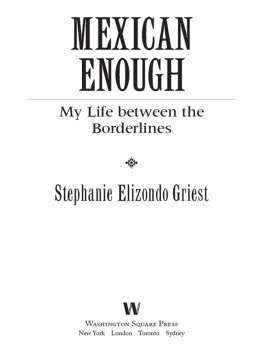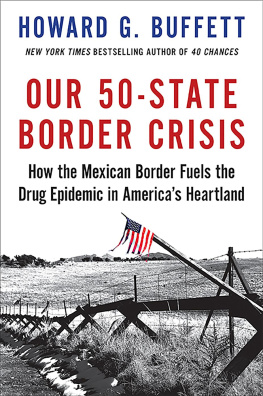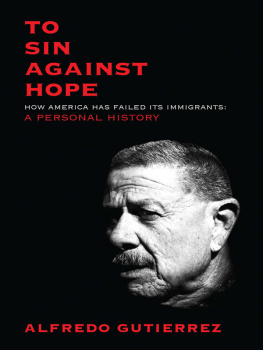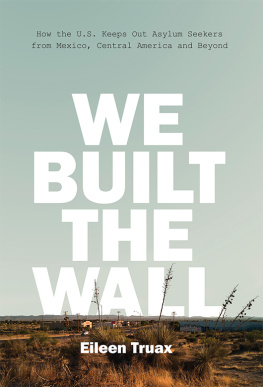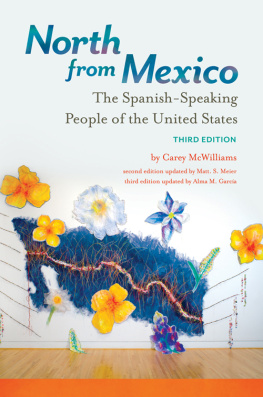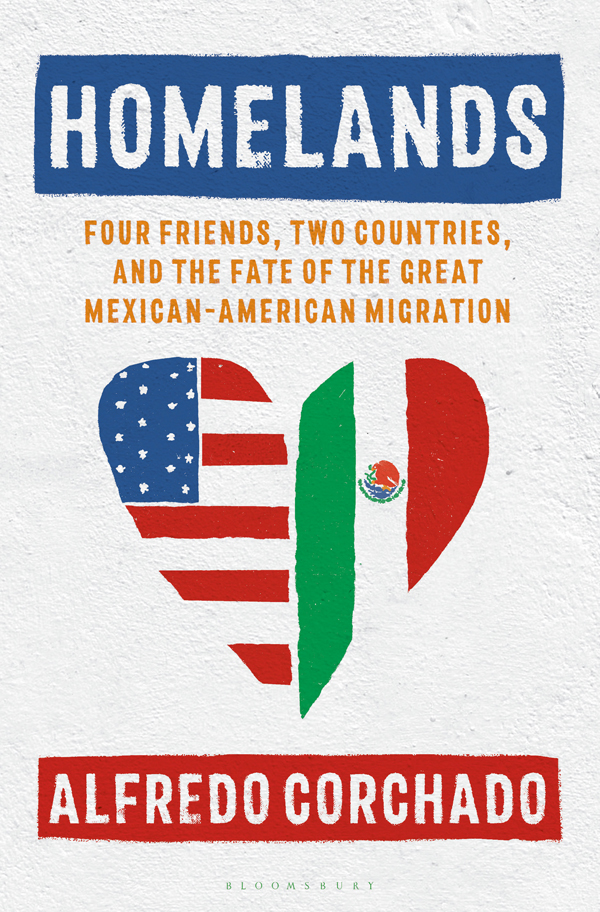Contents
Guide
Pagebreaks of the print version


To the faceless shadows at dawn for still dreaming and believing
BY THE SAME AUTHOR
Midnight in Mexico: A Reporters Journey Through a Countrys Descent into Darkness


CONTENTS
I
In-between
all that comes of outside where homelands break,
throw up their barriers
and the cloudless sky threatens endless rain.
To remain here
might be to plant a flag
in nowhere
entredeaux
words like talismans gobe freedream,
go figure
II
Somewhere between sound and sense a relentless driving forward
in and down
you leave the roots on
let them dangle, and show
for all those who might question
where from is from
where home is hidden
where children become their mothers where saints are just as sinister
Sigurd Selby Stoneyroad the avenues broad below me
divided in allegiance to marks
my own breath makes on the rainwet panes
again and again and again these worlds come back to me
in the full force of their movement
a quality of sky and earth and heaven behind histories of two countries
beyond patois , a singular difference: that here we speak simply
and say what we mean to say
that we meet somewhere in the middle by night, or by day
ever wandering
till love slips, laughter holds,
and life calls us back again
IRISH POET JONATHAN C. CREASY, PARIS, 2017
It took days of calling on the spin-dial phone before Primo picked up with a heavily accented Hola?
I introduced myself in Spanish.
I had been told by a friend in El Paso that Primitivo Primo Rodrguez Oceguera could be the only other Mexican in Philadelphia. Just me and a Jesuit-educated human rights activist with Marxist tendencies. Not the type of guy Id usually hang out with, but it was my first winter away from homethe U.S.-Mexico borderand I was lonely and desperate.
We spoke briefly and agreed to meet. At my suggestion and because the place was near my apartment, we met at an Indian restaurant and made a tradition out of it, every Saturday. I didnt know much about Primo but, by virtue of being Mexican, I counted him as my only friend in Filadelfia .
One night, feeling like curry wasnt going to cut it anymore and yearning for Mexican food, we took a gamble on a place Primo had heard about.
Tequilas , read the sign outside the restaurant.
We swung the door open against the icy wind to a blast of warmth radiating from inside. We entered with a bad attitude, skeptical that this Mexican restaurant could be the real thing. I was greeted by an altar to the Virgin of Guadalupe with photos of Cuban revolutionaries Ernesto Che Guevara and Fidel Castro, Mexican revolutionaries Pancho Villa and Emiliano Zapata and the leftist Uruguayan writer Eduardo Galeano.
I rolled my eyes.
Another phony capitalist capitalizing on Latin Americas romantic leftist leaders and the revered brown saint. Really, the Virgin of Guadalupe? I imagined my mother and her daily prayers back home, hoping they would be enough to guide me through this new life.
What did this cabrn know about our faith? All this, just to make a few bucks from tacos.
Insulting.
We grabbed two chairs at the bar. It smelled surprisingly authentic. Not quite like my mothers cookingbut close.
Cruz de Navajas, a popular song about love and betrayal by the Spanish pop group Mecano, was playing, not some generic instrumental mariachi music. Ana Torrojas angelic voice hooked me. I mouthed the lyrics as we sat studying a menu that seemed straight out of Mexico. In classic Mexican satire, the menu lampooned Tex-Mex food, mockingly listing nachos obligatorios as an obligatory item to appease those who believe that any Mexican restaurant had to include nachos. But the sarcasm wasnt all. The menu seemed to educate ignorant patrons about the history of the U.S.-Mexico border.
Genius marketing, I thought. The dishes included mole, complete with trenza de carne , beef in a braided pastry.
Somebody here knows Mexico intimately, I thought. The Spanish pop music and menu began to seduce me. I lowered my guard.
Primo was older than me but I couldnt place his ageand didnt dare ask. He had a receding hairline and tiny mustache that gave him the look of a Don Juan with matador instincts. His eyes popped behind his Hemingway eyeglasses when he talked about something that he was passionate about. His top four? Politics, immigration, salsa music and women. But not always in that order.
I had learned from our Saturdays together that he was working to help undocumented immigrants legalize under the generous new amnesty program. President Ronald Reagan had just signed the Immigration Reform and Control Act (IRCA) into law. He called it amnesty during a presidential debate with Democratic presidential candidate Walter Mondale in 1984: I believe in the idea of amnesty for those who have put down roots and lived here, even though some time back they may have entered illegally. The concept stuck.
Primo and I rarely spoke about anything personal except nostalgia and policy.
I told him about my familys background, how we emigrated from Mexico, thanks to the 1965 Immigration Act that President Kennedy had advocated for before his assassination. I told him how my family once worked as migrants in the fields of California and how I managedby luck, I confessedto nail down this Wall Street Journal gig. From working at a scrappy afternoon newspaper, the El Paso Herald-Post , now here I was, working on the ninth floor of the twenty-one-story redbrick North American Building on South Broad Street commissioned by Thomas Wanamaker. It felt surreal.
On those few first days to work, Id take the train with my bureau chief, Frank Edward Allen, who had generously been hosting me at his home while I found a place to live. I sat shoulder to shoulder with commuters rustling the pages of the Philadelphia Inquirer , the Wall Street Journal or the New York Times , occasionally sharing a section but hardly ever saying a word.
If all of these people were Mexican, I thought, this train would be so loud every morning. Everyone would know each other, all smiles and laughter. Kisses on the cheek and long, familiar hugs. But, no, Philadelphia felt sterile and soulless.
The very first day of my new job, Frank and I walked out of Suburban Station, an art deco building with commuter trains underneath. Onward to Fifteenth Street across a park with a statue with the word LOVE in red. On my left was the impressive City Hall, a Gothic-looking brick structure faade adorned with marble. The North American Building was once the tallest in Philadelphia, back when it was completed in 1900, a title it held for a year before being eclipsed by City Hall and its statue of William Penn. Wanamaker housed his own newspaper, the North American , in the building until it went out of print in 1925. Now the building had new, highly esteemed journalism credentials.


